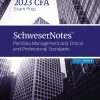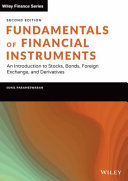Financial Inclusion and Poverty Alleviation Perspectives from Islamic Institutions and Instruments 1st edition by Whitley, Hosein 3319697994 9783319697994
$50.00 Original price was: $50.00.$25.00Current price is: $25.00.
Financial Inclusion and Poverty Alleviation Perspectives from Islamic Institutions and Instruments 1st edition by Whitley, Hosein- Ebook PDF Instant Download/Delivery: 3319697994, 9783319697994
Full download Financial Inclusion and Poverty Alleviation Perspectives from Islamic Institutions and Instruments 1st edition after payment

Product details:
ISBN 10: 3319697994
ISBN 13: 9783319697994
Author: E. Whitley; G. Hosein
This book explores the relationships between financial inclusion, poverty and inclusive development from Islamic perspectives. Financial inclusion has become an important global agenda and priority for policymakers and regulators in many Muslim countries for sustainable long-term economic growth. It has also become an integral part of many development institutions and multilateral development banks in efforts to promote inclusive growth. Many studies in economic development and poverty reduction suggest that financial inclusion matters. Financial inclusion, within the broader context of inclusive development, is viewed as an important means to tackle poverty and inequality and to address the sustainable development goals (SDGs). This book contributes to the literature on these topics and will be of interest to researchers and academics interested in Islamic finance and financial inclusion.
Financial Inclusion and Poverty Alleviation Perspectives from Islamic Institutions and Instruments 1st Table of contents:
Part I Trends and Challenges Facing Financial Inclusion and Inclusive Development in Muslim Countrie
1 Quality of Institutions and Inclusive Financial Development in the Muslim World
Abstract
1.1 Introduction
1.2 Literature Review
1.3 Methodology
1.3.1 Empirical Model Specification
1.3.2 Econometric Methodology
1.3.3 Endogeneity
1.4 Data and Descriptive Analysis
1.4.1 Descriptive and Statistical Analysis
1.4.2 Correlation Analysis
1.4.3 Graphical Analysis
1.4.4 Data Diagnostic Tests
1.4.4.1 Model Specification Test
1.4.4.2 Multicollinearity Test
1.4.4.3 Normality Test
1.4.4.4 Hausman Test: Fixed Effects Model vs. Random Effects Model
1.5 Empirical Results and Discussion
1.5.1 Cross-Sectional Analysis
1.5.2 Panel Data Analysis
1.6 Conclusion
References
2 Financial Intermediation, Development, and Access to Finance in an Islamic Environment
Abstract
2.1 Introduction
2.2 Related Literature
2.3 Data and Methodology
2.4 Analysis of Results
2.5 Discussion and Robustness Checks
2.5.1 Impact of Economic and Human Development
2.5.2 Impact of Financial Development and Financial Intermediation Conditions
2.6 Conclusions
Appendix. Definition of Variables
References
3 Financial Inclusion for Women: Impact Evaluation on Islamic Microfinance to Women’s Empowerment
Abstract
3.1 Introduction
3.1.1 Background and Rationale
3.1.2 Research Statement
3.1.3 Objectives
3.2 Literature Review
3.2.1 Islamic Views on Poverty
3.2.2 Islamic Views on Women Empowerment
3.2.3 Microfinance and Women Empowerment
3.3 Methodology
3.3.1 Methodological Framework
3.3.2 Sample Design and Selection Procedures
3.3.3 Questionnaire Design
3.3.4 Method of Data Analysis
3.3.5 Regression Methods
3.3.6 Propensity Score Matching
3.3.7 Hypothesis
3.4 Result and Analysis
3.4.1 Development of Microfinance in Indonesia
3.4.2 Women Empowerment in the View of Women’s Muslim
3.4.3 Review on Islamic Microfinance
3.4.3.1 Misykat Program of DPU-DT (Dompet Peduli Ummat Daarut Tauhid)
3.4.3.2 Zakat Utilizations Program of BAZNAS
3.4.4 Descriptive Analysis
3.4.5 Estimation Results
3.4.5.1 Hypotheses 1: Preference-Based Indicators of Empowerment
3.4.5.2 Hypotheses 2: Autonomy-Based Indicators of Empowerment
3.4.6 Summary of Empirical Results
3.4.7 Discussion of Results
3.5 Conclusion
References
4 Financial Inclusion and Poverty Alleviation in Muslim-majority Countries: The Role of Islamic Fina
Abstract
4.1 Introduction
4.2 Islamic Finance and Financial Inclusion
4.2.1 Reasons for Financial Exclusion
4.2.2 Financially Excluded for Religious Reasons: Who and Where?
4.2.3 Islamic Finance and Financial Inclusion
4.2.4 Islamic Finance and Financial Inclusion in Other Studies and Reports
4.2.5 Concluding Remarks
4.3 Qard Hassan
4.3.1 Qard Hassan: Qard and Ihsan
4.3.2 Financial Needs of the Poor: Qard Hassan vs. Qard and ZakatSadaqa
4.3.3 Qard Hassan vs. ZakatSadaqa
4.3.4 Qard Hassan vs. Qard
4.3.5 Qard Hassan and the Question of Its Sustainability in the Long Run
4.4 Qard Hassan Islamic Microfinance: A Case Study of Pakistan’s Akhuwat
4.4.1 Background: Microfinance and Islamic Microfinance in Pakistan
4.4.2 Akhuwat: An Introduction
4.4.3 Akhuwat Loans and Operations: A Brief of Presentation of Available Data
4.5 Conclusion
References
Part II Institutions and Instruments for Financial Inclusion and Inclusive Development in Muslim Cou
5 Application of Zakat to Food Security in the Context of Low-Income Rural Areas in Bangladesh: A Co
Abstract
5.1 Introduction
5.2 The Context in Bangladesh
5.3 Conceptual Framework
5.4 Discussion and Implications
5.4.1 Collection of Zakat
5.4.2 Procurement of Food
5.4.3 Distribution of Zakat
5.5 Conclusion
References
6 Behavioral Dimensions of Islamic Philanthropy: The Case of Zakat
Abstract
6.1 Introduction
6.2 Prior Studies
6.3 Objective, Data, and Methodology
6.3.1 Clustering Approach
6.4 Findings and Discussion
6.5 Conclusion
Appendix 1: List Statements and Descriptors
References
7 The Impact of Zakat Programs from Human Development Perspectives: An Empirical Evaluation
Abstract
7.1 Introduction
7.2 Zakat and Welfare: Some Empirical Findings
7.3 Research Methodology
7.3.1 The Type and Procedure of Sampling
7.3.2 Methodology
7.4 Findings
7.4.1 HDI of Household of Mustahiq
7.4.2 Regression Analysis
7.5 Conclusion
References
8 The Nature of Waqf Land and Properties Development in Muslim Countries
Abstract
8.1 Introduction
8.2 Review of Waqf Development
8.3 Binding Constraints to Development of Waqf Land and Properties
8.4 Framework for Waqf Land and Property Development
8.5 Conclusion
References
9 Relationship Between Intention and Actual Support Toward the Construction of Modern Waqf-Based Hos
Abstract
9.1 Introduction
9.2 Theory of Planned Behavior (TPB)
9.3 The Variables
9.3.1 Attitude
9.3.2 Moral Duties
9.3.3 Perceived Behavioral Control
9.3.4 Religious Duties
9.3.5 Intention
9.3.6 Financial and Non-Financial Support (Charity)
9.4 Conceptual Framework
9.4.1 Hypotheses
9.4.2 Research Methodology
9.5 Results and Discussion
9.5.1 Profile of the Respondents
9.5.2 Reliability Statistics, Fitness of SEM, and Results of Hypotheses Testing
9.6 Conclusion
References
Glossary
Index
People also search for Financial Inclusion and Poverty Alleviation Perspectives from Islamic Institutions and Instruments 1st :
financial literacy and poverty
financial inclusion and health
financial inclusion and poverty
financial inequality disability race and poverty in america
Tags:
Whitley,Hosein,Financial Inclusion
You may also like…
Uncategorized
Business & Economics - Professional Finance
Education Studies & Teaching - Special Education
Diversity and Inclusion in Educational Institutions 1st Edition Fawzia Reza
Business & Economics - Investing
Uncategorized
Politics & Philosophy - Government & Politics
Politics & Philosophy - Sociology
Social Work for Poverty Alleviation 1st Edition Deping Xiang
Politics & Philosophy - Government & Politics
Business & Economics - Professional Finance











